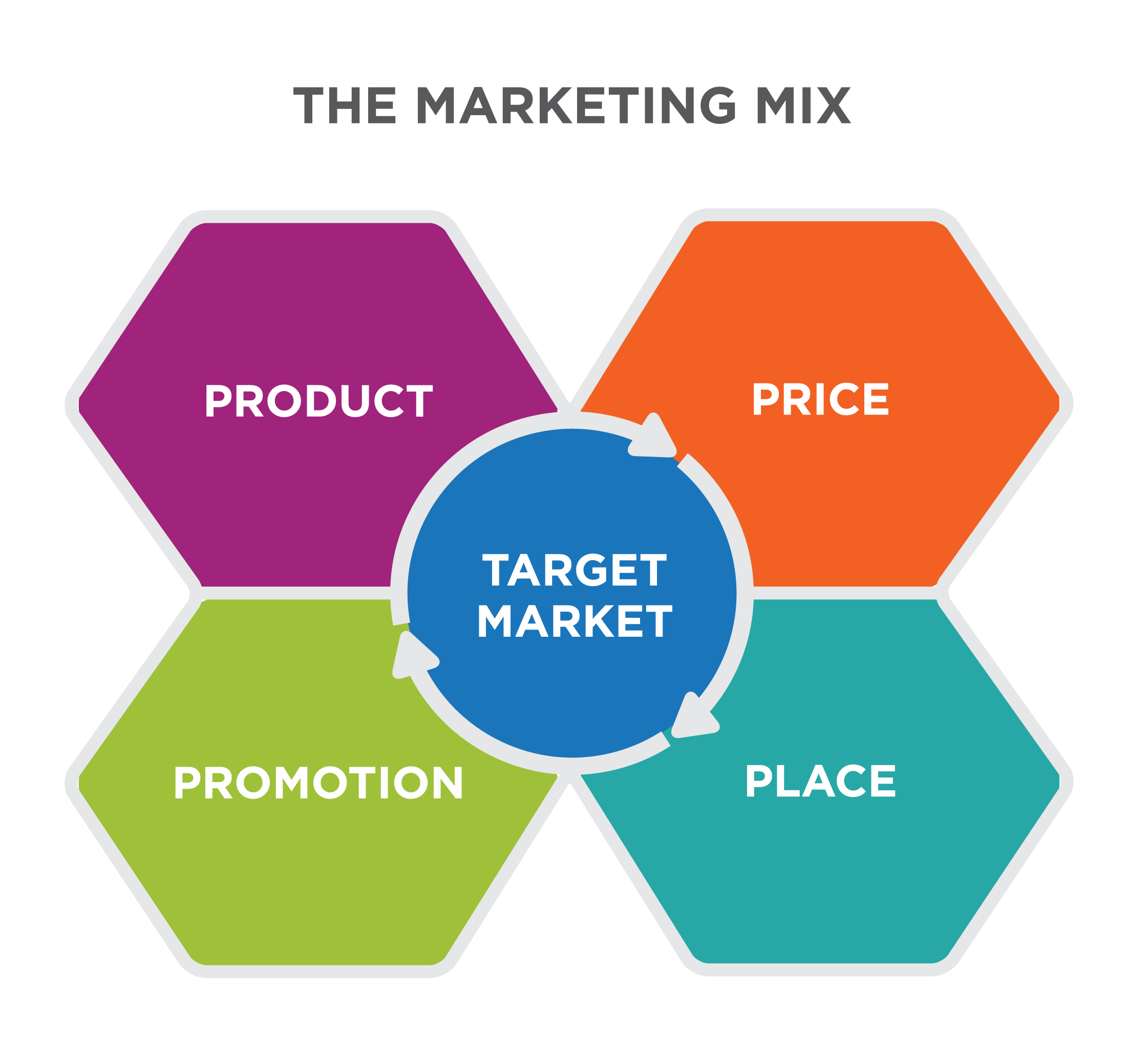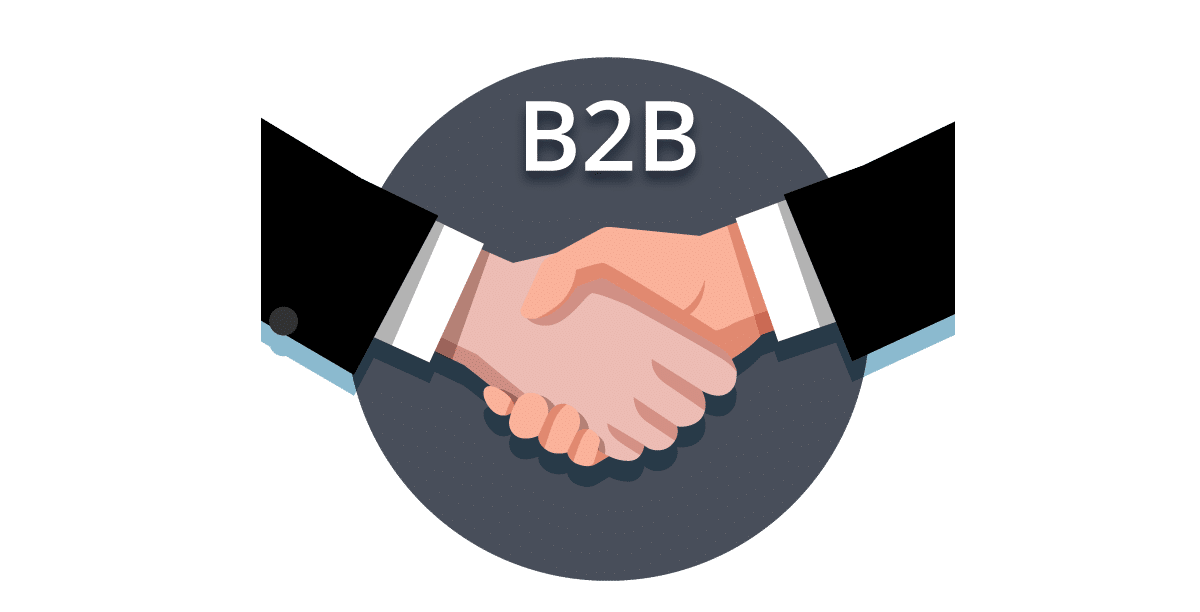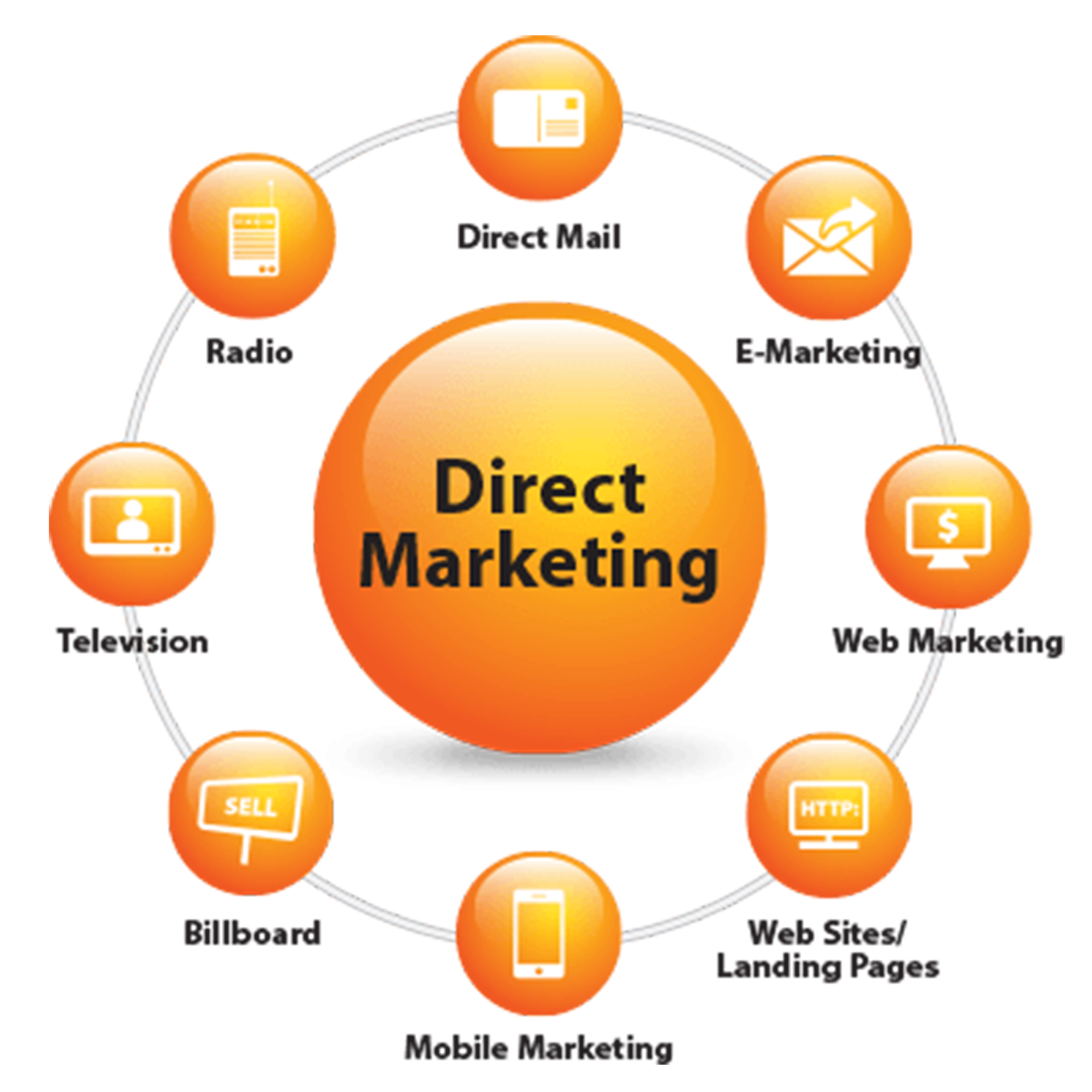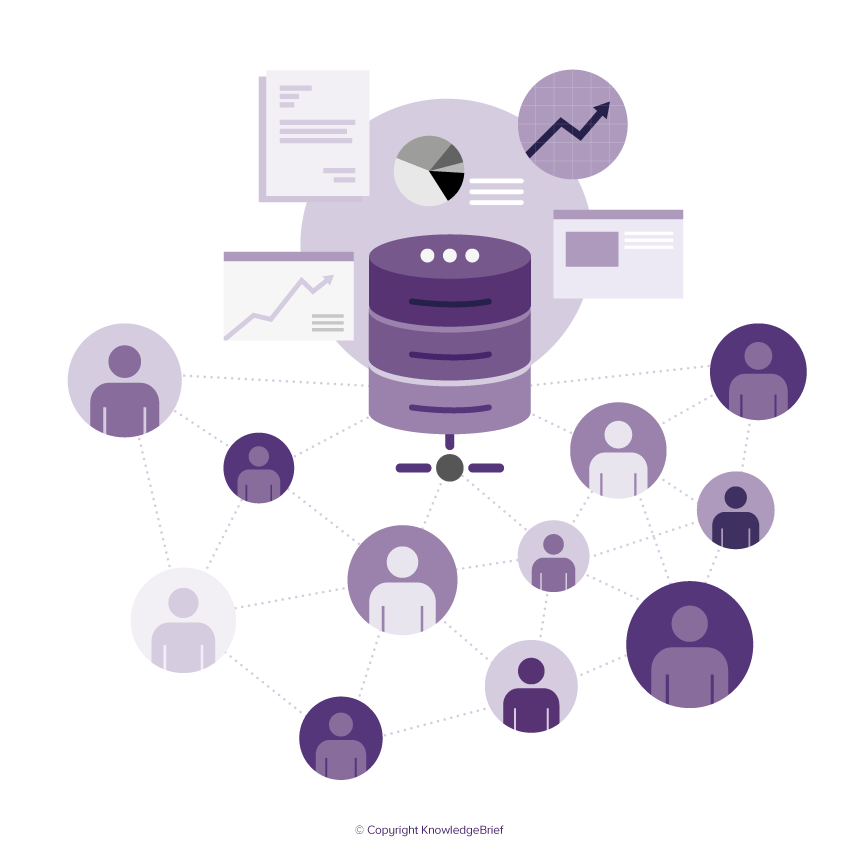
Join the 1,000+ brands that trust us for their link building.
Marketing is a crucial part of running any successful business. It’s how companies promote services to attract new clients and increase revenue.
To reach the widest possible audience, we use hundreds of different marketing strategies. Whether it’s online or in person, companies have to come up with fresh ways to advertise themselves.
So, if you’re interested in finding out about the types of marketing, you’ve come to the right place. Let’s dive into some of the most popular strategies and when to use them.

The Marketing Mix
With hundreds of marketing strategies available to you, it can be tough to decide which one to use. To help you figure that out, you can consider the “marketing mix”.
These are the 7Ps you need to take into account when coming up with a strategy.
Product
The first aspect of the business you should consider is the product. For starters, is it a physical object or are you providing a service?
This will help you narrow down how to advertise your company. For example, if you sell pens, you can hang posters around schools and office buildings.
Yet, when you’re offering a service like boxing classes, then flyers would be more effective.
Once you outline your product, you need to figure out what makes it unique. Each item must have a special selling point to help market it to the masses.
That will make grabbing future clients’ attention much easier.
Promotion
Promotion is all about finding the best way to reach an audience for your product. When choosing a marketing strategy, you have to ensure that your intended clients will see it.
This can come in many forms, including advertising, or even in-store activities. The key is to be aware of where your audience is.
That’s when market research comes into play. It can help you pinpoint who is buying your products or services.
Then, once you figure this out, you opt for one of the two main types of promotion, offline or digital marketing.
Offline offers a small range, but companies can reach out to clients and make them feel important.
Moving on, digital marketing has a much broader reach. It can travel to thousands of people, but for that to work, they have to be impersonal and general.

Price
Next, we can turn our attention to the cost of services. We all know how important the price of a product is to the company’s bottom line.
However, it can also be a way to promote and market your business.
Consumers are always on the lookout for deals and ways to save money. So, a tactic like introducing promotional sales may be an amazing way to attract new clients.
On the other hand, some clients prefer buying exclusive or luxury items. In that case, marking up the price may be the way to go.
So, figuring out your pricing will be crucial. You can’t market affordable products using the same method as high-end ones.
Place
This section deals with where you operate your business and sell your products. With a physical store, your aim will be to reach the people directly around you.
That’s why you have to focus on making signs and maybe even run an ad in a local news outlet.
However, with online stores, the goal is to attract traffic to your website. To do that, you can promote on social media or other digital platforms.
People
When creating a marketing strategy, there are two types of people you should be looking at. First off, it should come as no surprise that consumers are crucial.
You have to choose a type of marketing that will appeal to the specific audience you want to reach.
For example, if you’re after a younger demographic, taking an ad in a newspaper won’t do much good. Instead, find out what they like and figure out how you can match that.
Once you’re sure your customers are happy, you can turn your attention to your employees. These are the true driving force behind your business.
Since they’re going to be dealing directly with your clients, you have to make sure they’re doing their jobs well.
This is especially true for the customer service and quality control departments.

Process of Delivery
Delivery services will also play a part in deciding your marketing strategy.
You want to make sure that when a potential client sees an ad campaign, they can go out and buy the product.
For instance, if you can only deliver within your state, there’s no use in marketing a product overseas.
Your marketing strategy should only include areas where you can supply your services.
Packaging
The last factor you should consider when creating a marketing strategy is the packaging.
We all know that first impressions have a tendency to last for quite a while. So, you have to project an image that will attract your intended audience.
With physical products, you have to consider the color and design of the items. For example, kids’ toys will have bright colors and fun shapes to help catch the eye.
Moving on, intangible services are a little tricky. Since there’s no physical packaging, the company has to rely on branding.
This involves presenting an image that the clients will trust and want to work with. The SirLinksalot Knight being an example of amazing branding!
Top 7 Types of Marketing
There are thousands of different types of marketing. Depending on the services you provide, the strategy you choose will change.
So, without further ado, let’s take a look at some of the most common methods of marketing.
Search Engine Optimization (SEO) Marketing
We’re sorta experts on this subject…
As you can guess by the name, this strategy focuses on optimizing search engine services.
When you enter a query into Google, the websites will use bots to crawl through the internet.
The bots will go from site to site collecting any data they can find that matches your question. Then, they group this information together using indexes.
These allow the search engine to classify and organize the data. Once that’s done, Google will display the answers in the form of links you can click on and explore.
Next, to determine the order of the links, Google will take a glance at a few other factors. This includes variables like the content in the articles showing up, the size and age of the site itself, and even the links that point to the site showing up in the query.
As professional SEO’s we mainly break this down into two categories: on-page and off-page factors.
On-page factors are variables that are being looked at on the website itself, and off-page meaning the variables that occur off the website, like backlinks.
Backlinks represent people talking about a particular website or web page. You can imagine them working in the same way press does when covering a topic.
As an SEO, if you figure out how to fine-tune these variables and get your websites up in the search queries, you can also expect to make a good amount of money through things like ad revenue, lead revenue, or even e-commerce.

Business-To-Business Marketing (B2B)
B2B deals with businesses that promote their services to other large corporations.
To help you understand this better, let’s take a look at fabric suppliers. Even though they work in the apparel market, they never interact with the consumers.
They’ll deal with major production companies. That means the suppliers need to get in touch with a purchasing department, not an individual.
When you do that, you have to rely on formal methods of marketing. That includes sending emails or an offer binder.
So, giving out flyers may not be the best way to drum up business.
Instead, the suppliers will have to focus on using one of many alternative types of marketing. Some examples include:
- Creating brand recognition
- Using a display at a trade show
- Sending out marketing videos
These methods will lead to a clothing brand paying attention to the fabric suppliers.
Business-To-Consumer Marketing (B2C)
Unlike B2B, this strategy focuses on reaching specific individuals.
With this method, you want to attract the consumers themselves. For that reason, you’ll have to tailor your products and services to their needs.
That means B2C is much more personal. So, you can rely on less formal promotional methods to advertise.
For instance, you can make use of tactics like flyers, posters, and even billboard ads.
On top of that, B2C marketing depends on reaching a wide audience. You need a constant supply of consumers to keep the business growing.
Unfortunately, this means you have to periodically update and rejuvenate B2C strategies. That’s why brands will switch up their online websites or set new promotional packages.

Direct Marketing
Direct marketing has been a huge part of our lives for hundreds of years. People take advantage of their ability to promote items to increase their revenue.
Before the age of the internet, consumers would have to go out to stores to find products. They would go into an establishment and walk around looking at different items.
Then, along comes a salesperson. This is an individual whose entire purpose is to sell services.
They will usually have extensive knowledge of a business’s products and features. With this data, they’ll use their negotiating skills to convince people to make purchases.
This is a simple method to make sure that your products are flying off the shelf. In addition, it’s an amazing way to build customer loyalty.
When a consumer buys a product on their own, they judge the item based on their own experiences. However, when we involve a salesperson, this is a little different.
The clients will ask for help and learn how to interact with the product.
This will build a connection with the customer and help inform their opinions. In turn, this creates trust and increases the chances of repeat customers.
Direct marketing is effective to the point where almost every industry uses it. For example, pharmaceutical companies have drug reps that travel around selling medications.
The downside to this method is that you have to rely on individuals. Since a salesperson has to establish a connection with clients on their own, there’s room for human error.
Sometimes they can end up alienating the customers instead.
On top of that, not all salespeople are equal. Some can sell products at a speedy rate without slowing down, while others will face issues.

Database Marketing
While dealing with consumers is an excellent marketing strategy, it’s not always easy. This is especially true if you run a large business with thousands of clients.
So, instead of creating personal connections, you can learn about their shopping habits. That means you look at how often they purchase new items and what they’re buying.
This allows you to predict how clients would respond to a new ad without interacting with them.
That’s why many businesses rely on data mining. They collect the relevant data from a client’s personal information and analyze it.
After that, the company can send out tailored messages to attract these customers. This can be in the form of promotional emails or sale texts.
In fact, some businesses can even take it a step further. Using client data, they can alter their products or services to match their needs.
Companies can lower prices, add new colors, or change the packaging to entice clients.
While database marketing is effective, it can also be costly. Tailoring your products to certain customers can be a huge investment.
Other than that, database marketing isn’t always reliable. For starters, some customers are private and don’t share their personal data online.
This will make it next to impossible to predict their behavior.
On top of that, even if you have the data, that doesn’t mean the clients will stick to their previous habits.
So, you may spend time and effort altering a product that people have no intention of buying.
Finally, some people consider data mining a breach of privacy. So, you may have to deal with ethical quarrels about the issue.

Social Media and Influencer Marketing
With the rise in popularity of social media, a new wave of marketing strategies came about. This started with influencers, who are people with high profiles and massive followings.
These individuals can partner with specific businesses to promote their services.
Typically, a company will send over a sample of its products to an influencer. Then, that person will take on the role of reviewing all the aspects of your business.
That includes product quality, customer service, and sometimes even packaging.
Once the influencer forms an opinion, they can share it with the masses. They can choose to do that in person or on social media, depending on their agreement with the company.
The cool thing about this is these “social signals” can also influence how search engines digest the importance of your site in relevant search queries.
One of the best aspects of this type of marketing is how easy it is. You don’t have to actively work on selling your products.
The main idea is to let someone else experience your services and then talk about them publicly.
That makes it an excellent way to reach a wide audience quickly. However, there’s a catch.
Since you’re involving an influencer, you don’t have full control over the strategy. You can ask the individual to mention certain talking points, but you can’t sway their opinion.
On top of that, this method can be quite pricey. You have to pay an inflated rate to make sure that the influencer uses their image to sell your product.
Another drawback is that there’s an age restriction.
Social media is a young man’s game since it mostly involves Millennials and Gen Zs. So, if your consumers are a little older, influencers may not be effective.
Content Marketing
With this method, instead of promoting a business, you’re marketing content. This is another way of increasing brand awareness and loyalty.
For example, when a writer is trying to find new clients, they choose one of two paths. The first one involves sending out their CV to different businesses.
That means the writer will spend time creating the resume and researching companies. Then, after months of applying, one or more employers will reach out.
The second method involves the writer showing off their skills. Instead of sending a CV out, they write an article and post it online.
They write an engaging piece that displays what they’re capable of. Once the article gains some attention, they can declare that they offer their services for a fee.
Both methods have their pros and cons, but the latter is much more effective. Not only is it less time-consuming, but it leaves the writer at an advantage.
Because the writer shows what they’re capable of, they can set their own terms. That includes deciding on their own hours and fees.
In addition, content marketing builds trust between the business and the clients. Since they get to see a sample of the work before they send in their order, it’s easier to commit to purchasing.
While this example follows writers, it applies to all forms of content. These could be videos, images, or even infographics.
You can also apply this marketing strategy to physical items. That’s why some businesses give away small samples of their products.
It gives the consumers a taste so that they’ll come back for the main course.

Event Marketing
Another marketing strategy involved planning certain events. There are a few ways you can go about implementing this method.
For starters, you can promote the announcement of a new product. For example, let’s look at some of the most successful electronic device companies, like Apple.
A few months before any of its products hits the market, the brand will produce advertising clips. They’ll also send prototypes to experts for review.
Then, they send out all this information during a release event. This will get potential consumers excited about the product.
They can start to look through its features and how it compares to other items on the market.
Other companies prefer to hold events when the product is ready for consumption. This is apparent with clothing companies.
Once a collection is ready, they hold fashion shows. These gatherings allow clients to inspect the apparel up close and see it in action.
Finally, companies can also throw promotional events. These are periods when products are up for sale at discounted prices.
The main idea behind these events is to get people interested in your business. Even if they don’t make a purchase, they’ll walk out and talk about your services.
They discuss what they saw or experienced with friends, family, and coworkers. That will substantially increase your potential client list.
Event marketing usually works best for expensive products. Since it creates a lot of hype, it encourages people to buy items they normally wouldn’t.
Sadly, implementing this strategy can be an investment. Since the event has a limit, once the period is over, the sales will take a hit.
Because of that, you may not achieve the revenue goal you’re after.
Wrapping Up
When looking at the different types of marketing, there are a few considerations to make. You have to look at the 7Ps first, to help you decide what strategy will work best for your company.
This includes product, promotion, price, place, people, the process of delivery, and packaging.
Once you figure out your needs, you can implement one of many marketing plans. Some examples of that are search engine optimization (SEO), B2B, and B2C marketing.
Other than that, you can use direct advertising, database marketing, and social media.
Finally, for a more general approach, you can go with event planning to promote your products.

Nicholas Altimore
Hey I’m Nick, the Founder/Director here at SirLinksalot. I have a passion for building online businesses and taking websites to the next level with the help of my amazing link building team.

We are active in our Facebook Group seven days a week and would love to hear from you. Ask us questions, learn from other group members, and share your knowledge.
Related Posts
No Results Found
The page you requested could not be found. Try refining your search, or use the navigation above to locate the post.
No Results Found
The page you requested could not be found. Try refining your search, or use the navigation above to locate the post.
No Results Found
The page you requested could not be found. Try refining your search, or use the navigation above to locate the post.
Ready To Start Building Your Rankings?
Your link building journey to the top of Google starts today! 🚀
Apply for Managed Link Building to get a free analysis and game plan, or order backlinks a la carte. 👇
Link building services that work.

